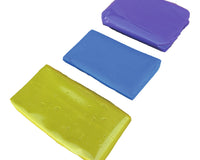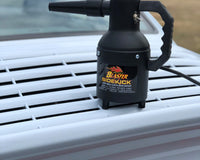Understanding the pH levels of car cleaning products is essential for effective and safe vehicle maintenance. The pH scale, which measures the acidity or alkalinity of a substance, plays a crucial role in determining how a cleaning product interacts with various surfaces on your car. In this detailed guide, we will explore how pH affects cleaning products, why it matters for car care, and how to choose the right pH-balanced products for different cleaning tasks.
Understanding the pH Scale
The pH scale ranges from 0 to 14, with 7 being neutral. Values below 7 are considered acidic, while those above 7 are alkaline. Each step on the pH scale represents a tenfold difference in acidity or alkalinity, making pH a logarithmic scale. For instance, a pH of 6 is ten times more acidic than a pH of 7, while a pH of 8 is ten times more alkaline.
How pH Impacts Cleaning Efficacy
The pH level of a cleaning product determines its effectiveness in breaking down different types of dirt and contaminants. Acidic cleaners (pH 0-6) are excellent for removing mineral deposits, rust, and water spots, making them suitable for tasks like de-scaling and removing brake dust. Alkaline cleaners (pH 8-14), on the other hand, are effective at cutting through grease, oils, and organic matter, making them ideal for cleaning tasks such as degreasing engines and removing tar. Neutral pH cleaners (around pH 7) are balanced and less likely to cause damage, making them suitable for general cleaning and maintaining delicate surfaces like car paint and glass.
Importance of pH in Car Care
For car care, the pH level of cleaning products is crucial as it affects not only the cleaning performance but also the safety of various surfaces. Using the wrong pH level can damage the paint, trim, and other components of your vehicle. For instance, highly acidic or alkaline cleaners can etch the paint, dull the finish, and corrode metal parts. Understanding the pH of cleaning products helps in selecting the right ones for specific cleaning tasks, ensuring effective cleaning without causing harm to your vehicle.
Acidic Cleaners: When and How to Use Them
Acidic cleaners have a pH level below 7 and are effective at dissolving mineral deposits, rust, and hard water stains. However, their use in car detailing should be approached with caution due to the potential for damage if not used correctly.
Suitable Applications for Acidic Cleaners
Acidic cleaners are ideal for specific cleaning tasks such as removing brake dust from wheels, cleaning glass to remove water spots, and de-scaling hard water stains from chrome and metal surfaces. Products like wheel cleaners often have a low pH to break down tough grime and brake dust, making them effective at restoring the shine of alloy wheels. Acidic cleaners are also useful for removing rust from metal parts, helping to prepare the surface for polishing or painting.
Safe Use of Acidic Cleaners
When using acidic cleaners, it’s essential to follow the manufacturer’s instructions and use them sparingly. Always wear protective gear such as gloves and goggles to protect yourself from splashes. Acidic cleaners should be diluted as per the instructions to prevent damage to surfaces. Avoid prolonged contact with car paint and rinse thoroughly with water after cleaning. It’s also advisable to test the cleaner on a small, inconspicuous area before applying it to larger surfaces to ensure it does not cause discolouration or etching.
Alkaline Cleaners: Their Role in Car Detailing
Alkaline cleaners have a pH level above 7 and are particularly effective at breaking down oils, grease, and organic matter. They are commonly used in car detailing for tasks that require powerful cleaning action without the harshness of acidic products.
Applications for Alkaline Cleaners
Alkaline cleaners are well-suited for removing grease and oils from engines, cleaning road tar and tree sap, and tackling organic stains such as bird droppings. Degreasers, often used in engine bays and undercarriages, typically have a high pH to effectively dissolve stubborn grease and grime. Alkaline cleaners are also used in interior detailing to remove tough stains from upholstery and carpets, where organic matter needs to be broken down for effective cleaning.
Using Alkaline Cleaners Safely
To use alkaline cleaners safely, follow the manufacturer’s dilution guidelines and wear appropriate protective gear. These cleaners can be quite powerful, so it’s important to apply them only to the intended surfaces and avoid contact with delicate areas such as rubber seals and painted surfaces. Rinse thoroughly after cleaning to remove any residual cleaner, which can cause damage if left on the surface. As with acidic cleaners, testing on a small area before full application helps to ensure compatibility and prevent potential damage.
Neutral pH Cleaners: Versatility and Safety
Neutral pH cleaners, with a pH around 7, offer a balanced cleaning solution that is safe for most surfaces. They are versatile and less likely to cause damage, making them suitable for regular use in car care.
Advantages of Neutral pH Cleaners
Neutral pH cleaners are ideal for general cleaning tasks, including washing the car’s exterior, cleaning glass, and wiping down interior surfaces. Their balanced pH means they are gentle on paint, plastic, rubber, and glass, reducing the risk of etching, corrosion, or discolouration. These cleaners are often used as car shampoos, interior cleaners, and glass cleaners due to their safety and effectiveness.
Best Practices for Using Neutral pH Cleaners
Neutral pH cleaners can be used frequently without the risk of damaging surfaces. They are typically diluted according to the instructions and applied with soft tools like microfibre cloths or wash mitts. For car washes, use a neutral pH shampoo to gently remove dirt and grime without stripping wax or sealant layers. For interior cleaning, a neutral pH cleaner can effectively remove dust and dirt from dashboards, seats, and trim without causing damage or leaving residue.

pH-Balanced Car Wash Shampoos
Car wash shampoos with a balanced pH are designed to clean effectively without harming the paint or other exterior surfaces. These shampoos play a vital role in maintaining the car's finish and protecting the applied wax or sealant.
Benefits of pH-Balanced Shampoos
pH-balanced car wash shampoos ensure that the vehicle’s paint and protective layers are not stripped or damaged during washing. They provide sufficient cleaning power to remove dirt, grime, and road contaminants while preserving the wax or sealant’s protective qualities. Using pH-balanced shampoos regularly helps maintain the car’s glossy finish and prolongs the life of the applied protective coatings.
How to Use pH-Balanced Shampoos
To use pH-balanced car wash shampoos effectively, dilute the shampoo according to the manufacturer’s instructions and apply it with a soft wash mitt or sponge. Work from the top down to prevent dirt from scratching the paint. Rinse thoroughly with clean water and dry with a microfibre towel to avoid water spots. Regular use of pH-balanced shampoos helps keep the car clean and protected, making it easier to maintain its appearance over time.
Selecting the Right pH for Specific Tasks
Different cleaning tasks require products with varying pH levels to achieve the best results without damaging the surfaces. Understanding which pH level to use for specific tasks is crucial for effective and safe car care.
pH Levels for Exterior Cleaning
For exterior cleaning tasks such as washing the car body, windows, and wheels, neutral to slightly alkaline cleaners are recommended. These cleaners provide effective cleaning power without harming the paint, glass, or rubber trim. Acidic cleaners should be reserved for specific tasks such as removing brake dust or hard water stains from metal surfaces.
pH Levels for Interior Cleaning
For interior cleaning, neutral pH cleaners are ideal as they are gentle on fabrics, leather, plastic, and rubber. Alkaline cleaners can be used for tougher stains, but care should be taken to avoid overuse, which can cause damage or discolouration to interior materials. Always test cleaners on a small area first to ensure compatibility with the surface.
Impact of pH on Protective Coatings
Protective coatings such as waxes, sealants, and ceramic coatings are sensitive to the pH levels of cleaning products. Using products with the wrong pH can strip away these coatings, reducing their effectiveness and durability.
Choosing Safe Cleaners for Coated Surfaces
When cleaning surfaces treated with protective coatings, use pH-neutral or slightly alkaline cleaners to avoid stripping the coating. Acidic cleaners can degrade the protective layer, while highly alkaline cleaners can cause streaking or dulling of the finish. Maintaining the correct pH balance helps preserve the integrity and longevity of the protective coatings.
Maintaining Coatings with pH-Balanced Products
To maintain the effectiveness of waxes, sealants, and ceramic coatings, use pH-balanced products that are specifically designed for coated surfaces. Regular washing with these products helps maintain the hydrophobic properties and shine of the coatings, making it easier to clean the car and reducing the need for frequent reapplication of protective layers.
Testing pH Levels of Car Cleaning Products
Understanding and testing the pH levels of car cleaning products can help ensure they are suitable for specific tasks and surfaces. pH testing can be done using simple tools and techniques to verify the suitability of products for car care.
How to Test pH Levels
pH levels can be tested using pH test strips or electronic pH meters. To test, simply dip the test strip or pH meter into the diluted cleaning solution and compare the results to the pH scale provided with the test kit. This allows you to determine whether the product is acidic, neutral, or alkaline and adjust its use accordingly.
Interpreting pH Test Results
Interpreting pH test results involves comparing the colour change on the test strip or the reading on the pH meter to the pH scale. A pH level of 7 indicates neutrality, while values below 7 indicate acidity and above 7 indicate alkalinity. Understanding these results helps in selecting the right products for different cleaning tasks, ensuring effective cleaning without damaging the vehicle’s surfaces.
Conclusion
Understanding the role of pH in car cleaning products is essential for effective and safe car care. The pH level of a cleaner determines its suitability for different tasks, impacting its ability to break down dirt, grease, and contaminants without harming the vehicle’s surfaces. By choosing the right pH-balanced products and following best practices for their use, car enthusiasts can maintain their vehicles in pristine condition, protecting the paint, trim, and interior from damage while achieving a thorough and effective clean. Regular pH testing and careful selection of cleaning products based on their pH levels ensure that each aspect of car care is addressed appropriately, resulting in a well-maintained and beautiful vehicle.




